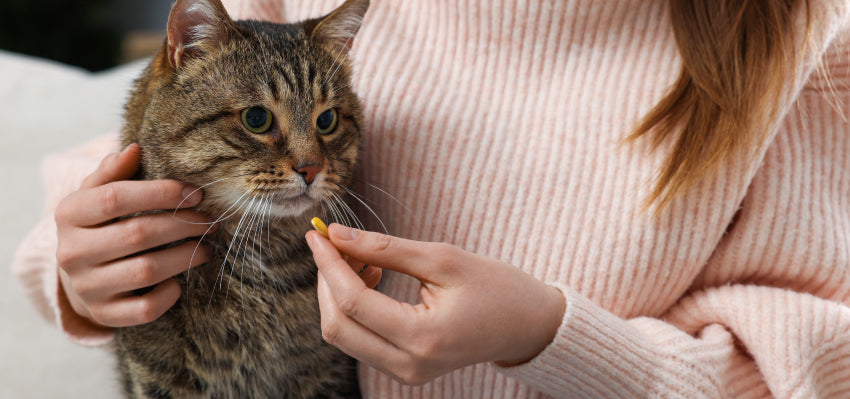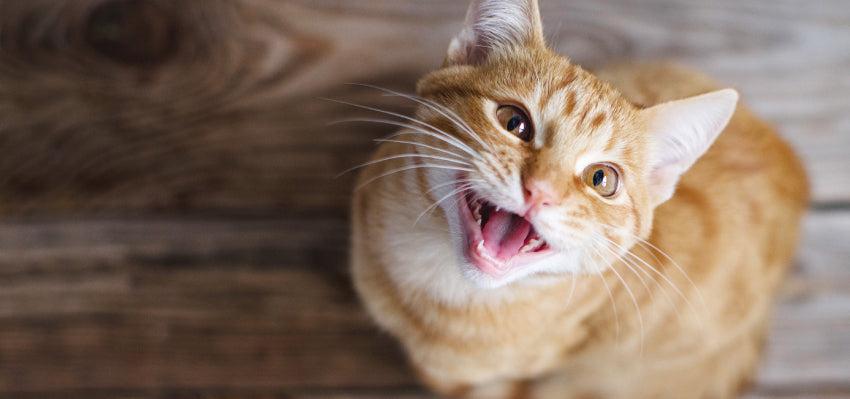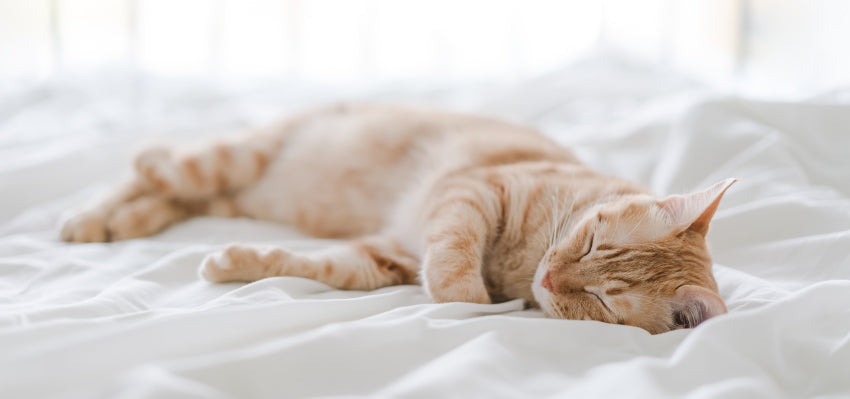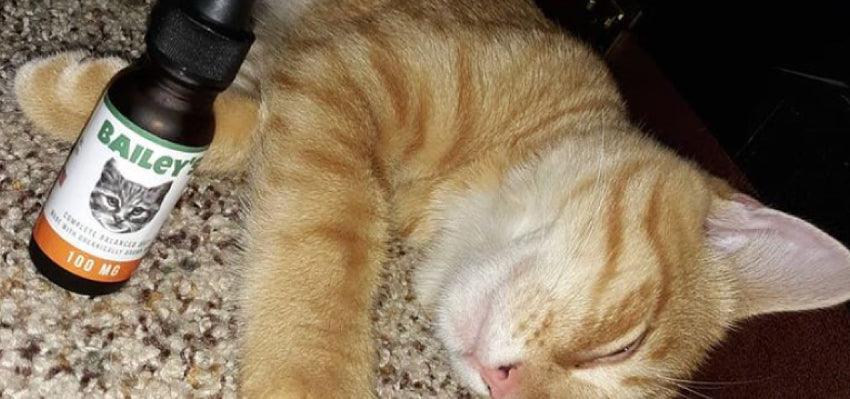Understanding Cerenia for Cats: A Complete Guide to Usage, Benefits, and Side Effects

Cerenia is a medication that helps prevent and treat vomiting related to motion sickness. It's available in both tablet form and an injectable format. To date, the FDA has approved Cerenia mg injections for use in both dogs and cats though the tablets are only approved for dogs.
Before you start your pet on this regimen, you may have some concerns about its safety, benefits, side effects, and more. Today, we're sharing it all in our comprehensive guide to Cerenia for cats.

What Is Cerenia?
Cerenia is the brand name for a type of medication called maropitant citrate, developed by Zoetis (formerly Pfizer). The FDA approved its use for dogs in 2007 and expanded that approval to cats in 2012.
Vets most commonly prescribe Cerenia to treat motion sickness in both dogs and cats. It can also be used to treat acute nausea in dogs, especially when they're undergoing chemotherapy.
Off-Label Use
The FDA has only approved the injectable form of Cerenia as safe for cats. However, vets can also prescribe it in tablet form in rare cases, though it's formulated for oral use in dogs.
When medications are prescribed and used in any way other than what's listed on their instruction label, the application is known as "off-label" or "extra-label".
🛍️ Related Products for Your Cat's Well-being 🐾

How Does It Work?
In technical terms, Cerenia is a neurokinin-1 (NK1) receptor antagonist. While this can be a little complicated to break down, it simply means that the medication stops a component called "Substance P" from binding to receptors in your pet's brain called "NK1". These receptors are known to initiate vomiting.
NK1 receptors are found throughout your cat's body, including the chemoreceptor trigger zone (CRTZ) and designated vomiting center in her brain. Together, these comprise a neural pathway known as the emetic center. In addition, the receptors are also located in her vagus nerve, which is close to her digestive tract.
Likewise, Substance P is also found in all three of these locations (CRTZ, vomiting center, and vagus nerve). When your cat gets nauseous, it binds to those NK1 receptors and triggers vomiting.
When you give your cat a Cerenia injection, the medication binds to NK1 instead, preventing or blocking Substance P from doing so.
Three Systems at Work
You might think that an anti-nausea medication would solely target your cat's stomach. However, that isn't the case with Cerenia. Instead, this injectable targets three different areas in your cat's body.
For this action to occur, these systems must all be in action. They include:
- Gastrointestinal system
- Nervous system
- Musculoskeletal system
When these mechanisms coordinate, it can induce the sensation of vomiting. Yet, the process must follow a specific sequence. Before your cat's stomach muscles tighten (gastrointestinal) and the vomit is forced upward (musculoskeletal), there must first be activity in her nervous system.
When motion or illness prompts your kitty to vomit, her brain's CRTZ first sends impulses to another part of the brain, called the medulla. In turn, this sends signals to the rest of her body that it's time to throw up. Those are the aforementioned NK1 receptors at work.
When Cerenia is present, it helps block that action. This is why it's known as an "antiemetic" medication. Suppressing those impulses stops her body from prompting the vomiting motion.

How Is Cerenia Used in Cats?
Cerenia is most commonly used to help control nausea and vomiting in cats. Vets often prescribe it for kitties that suffer from motion sickness. Let's take a closer look.
Short-Term Relief
Most of the time, feelings of nausea and queasiness are brought on by short-term changes to your cat's environment.
For instance, you may need to take them to the vet or groomer, and the motion of your vehicle makes them sick. While trips like these may cause only mild discomfort in some pets, they can lead to acute vomiting episodes in others.
Cerenia can help settle their brains and bodies, so they're less likely to experience adverse effects from the excess motion.
Long-Term Treatment
Nausea can also be a symptom of a more long-term condition, such as renal failure.
As their kidneys begin to fail, cats may begin to feel sick to their stomachs. This is due to the buildup of uremic toxins within their bodies. When this is the case, your vet might recommend Cerenia to help control their symptoms and keep them comfortable.
Mild Pain Relief
Sometimes, vets may also prescribe Cerenia for mild pain relief. This is a common practice during surgery, especially operations that require the manipulation and movement of your cat's internal organs (such as spaying).
When Cerenia is injected before the procedure, it may help limit the amount of general anesthesia the surgical team has to use.
Itch Control
While not as common, vets can also prescribe Cerenia to help soothe the skin of cats that suffer from skin conditions such as hypersensitivity dermatitis. This is irritation caused by general itchiness, without a link to fleas or any kind of food-induced allergy.

Potential Side Effects to Note
What can you expect when you give your cat an injection of Cerenia? The most common reaction is an immediate vocalization (e.g. cry, whine, welp) when the injection occurs. Your kitty may also experience mild pain or discomfort at the injection site.
Most of the time, this short-term reaction will fade after a few minutes. However, if your cat appears to be in continued distress after the injection is finished, be sure to check with your vet.
To lessen these effects, some vets choose to refrigerate Cerenia for a short while before administering it, rather than give it at room temperature. This helps slow and control the route of the medication, which can help alleviate the associated discomfort.
While rare, there are a few Cerenia side effects that can occur after your kitty receives a dose. These include:
- Mild fever
- Fatigue and lethargy
- Dehydration
- Blood in the urine (hematuria)
- Excessive drooling
- Swelling at the injection site
There have also been very isolated instances of cats experiencing an allergic reaction to this medication. Your vet will assess your pet's health and history before recommending or prescribing this solution.

Measuring Proper Cerenia Mg Dosage
Cerenia is available as both an injectable and an oral tablet. Let's take a look at how to administer it to your kitty each way.
Injectable
Most of the time, cats will receive a Cerenia injection. The most commonly-formulated dosage is one milligram of the medication per kilogram of their body weight. The injectable is typically administered subcutaneously (under the skin) but it can also be given intravenously (in the vein).
In some instances, pet parents may only give their cat one injection of the medicine. For instance, if you're traveling and you know the car will upset your kitty's stomach, you may only need a single dose. If you're administering it for several days, the maximum duration of the prescription is normally once daily for up to five days.
Tablet
When vets prescribe Cerenia tablets for a cat, it's an off-label application. This is not a common approach and is only viable in certain rare cases when an injectable isn't an option.
Before giving your cat a Cerenia tablet, make sure the usage is approved by not only your personal vet but also an attending veterinary surgeon. Note that there's a small risk of developing an allergic skin reaction if your skin is topically exposed to the drug.
To avoid this reaction, remember to wash your hands immediately after administering a Cerenia tablet to your cat.

Consider CBD for Optimized Wellness
It can be disheartening to see your cat feeling nauseous. Cerenia can be a great way to ease their discomfort. In addition, we also encourage you to check out our CBD products as a way to optimize your pet's overall wellness.
Though not intended to be used as a substitute for Cerenia, these products can help your kitty stay calm and healthy. They're veterinarian-made and third-party lab-tested.
One example is our CBD Oil for Cats. All you have to do is add the recommended dosage to her food, and you'll do your part to support her well-being, reduce inflammation, and boost her cognitive function.
🍑 Related Article: Exploring Fruits for Your Cat 🍇
Are Raspberries Safe for Cats?
Discover whether raspberries are a safe and healthy treat for your feline friend. 🐱🍇
Read More
FAQs
Cerenia can be an effective way to prevent and treat vomiting in cats. However, it's important to learn as much as possible about this medication before beginning a regimen with your pet. Let's review answers to some of the most common questions.
How Long Until It Takes Effect?
Cerenia works rapidly. Most cats will begin to feel the effects within two hours, though some could feel it within 30 minutes.
What Are the Risk Factors?
There are some cats that might be more at risk when taking Cerenia than others. This includes:
- Pregnant cats
- Lactating cats
- Cats younger than 16 weeks old
- Cats with liver disease
If your fluffy best pal is suffering from liver disease, your vet may reduce her dose by up to 50%. This is because Cerenia is metabolized by the liver, and the medication could cause additional harm to this organ.
In addition to understanding these risk factors, it's also important to make sure you're using Cerenia appropriately. While it is effective at preventing the act of vomiting, take note of what the underlying cause might be.
If your cat is feeling sick due to a physical obstruction in her gastrointestinal tract or because she consumed something poisonous, she may need to vomit to expel the offending substance from her stomach. Only use this medication as listed on the label or as advised by a trusted vet.
There's also the risk that using Cerenia to keep your cat from vomiting could mask critical signs of illness or disease. If she can't throw up due to the medication, you may incorrectly assume she's feeling better when the problem is still ongoing.
Are There Any Drug Interactions to Note?
Your vet will be able to tell you whether it's safe for your cat to receive Cerenia in addition to any other medications she's currently taking. As this medication is classified as a protein-bound drug, there have not been studies that research how it interacts with other protein-bound drugs given at the same time.
Other such drugs include:
- Cardiac mediations
- Anticonvulsant medications
- Nonsteroidal anti-inflammatory drugs (NSAIDs)
If your furball is currently receiving any such medications, your vet will want to monitor them closely while they take Cerenia to watch for any reactions. Remember to also tell your vet about any vitamins, supplements, or herbal remedies your kitty is currently on.
Can Cerenia Help Cats Suffering From Weight Loss?
If your cat is losing weight, you may consider Cerenia to help them retain nutrients. In this case, the only way the medication could help is if the weight loss is attributed to repeat vomiting.
There could be many reasons why your cat isn't gaining weight, and Cerenia is only formulated to treat one of them.
What If I Miss a Dose?
Cerenia is meant to be given once daily. If you miss a dose, don't double up or add an extra one. Simply give your cat the normal dose the next day, at the normal time.

A Natural Way to Help Cats Feel Their Best
Pets are family, and that includes all the fluffy kitties in our lives! If your vet has prescribed Cerenia mg to help keep her vomiting in check, this guide can help you understand a little more about the medication.
It's important to make sure you're administering it safely and correctly. When you do, you should notice a decrease in her discomfort, especially if she's about to go on a trip that would normally cause motion sickness.
At Bailey's, we're here to equip and empower pet parents to make the best decisions possible for their four-legged pals. We formulate all of our CBD products to be safe, effective, and nutrient-rich. Consider joining our Monthly Membership program so you're always well-stocked!
These products have not been evaluated by the FDA and are not intended to diagnose, treat, cure, or prevent any disease.













